Ball pythons are generally not picky eaters and will consume a variety of live prey items. However, some individual ball pythons refuse to eat anything offered while others may only be interested in eating one type of food item. Understanding why your snake is not eating can help you determine how to get it feeding again.
This post explores the various reasons why a ball python might stop eating and offers solutions for getting them back on the right track.
Dangers of Ball Python Not Eating:
Malnutrition. Your ball python is not getting the nutrients it needs to stay strong and healthy. If your snake does not eat for a long time, you will need to bring him or her in for an examination from a veterinarian as soon as possible. There are many different things that could be causing your ball python not to eat. After they have been examined, we can determine what type of treatment would be best suited for them.
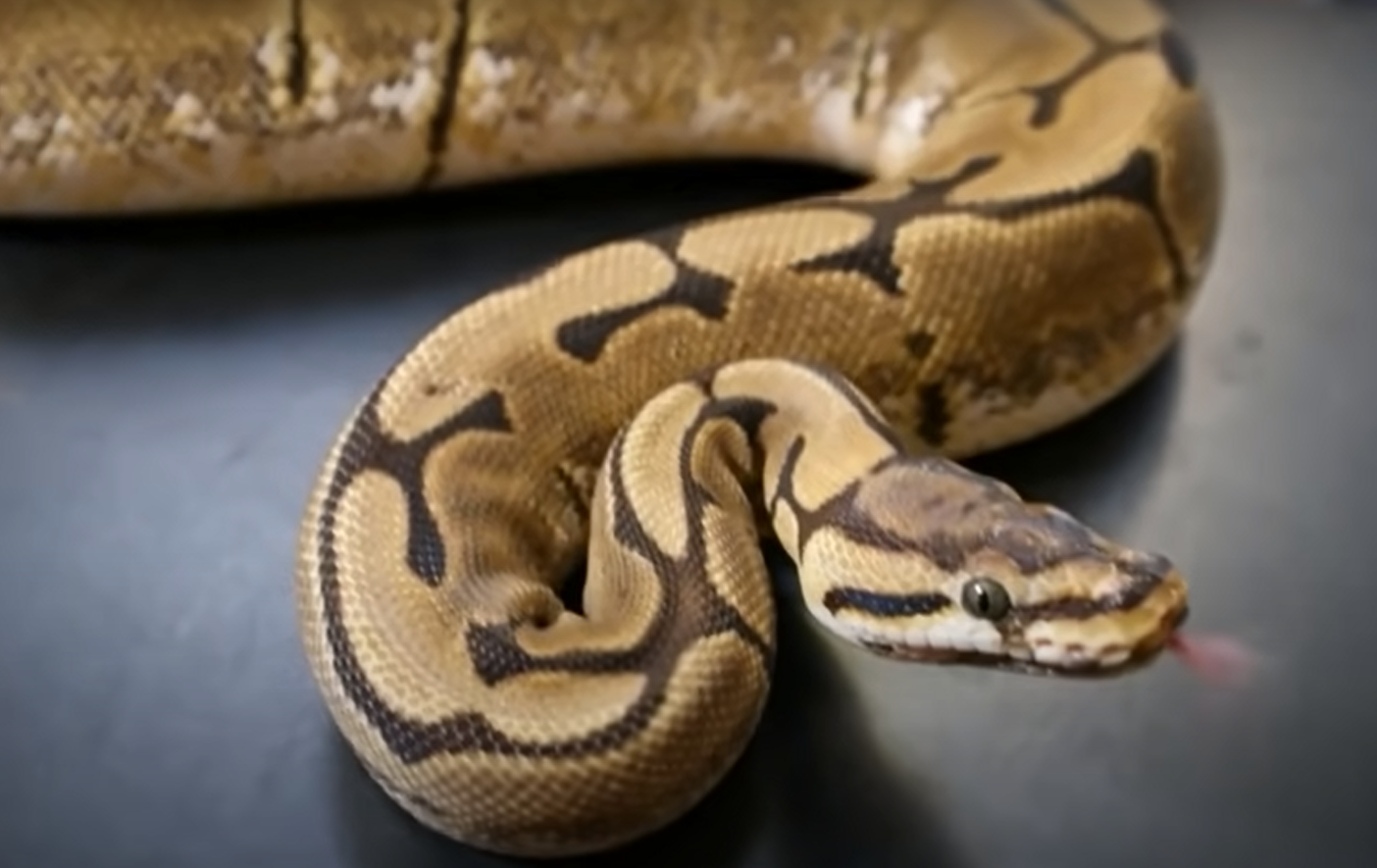
Intestinal Blockage. Sometimes if your ball python stops eating, they can develop an intestinal blockage! This happens when there is something large stuck inside the digestive tract blocking movement through the intestines preventing digestion from occurring like normal. When this occurs, snakes stop defecating normally because feces cannot pass along until whatever is causing the obstruction moves out of its way.
Death. The most dangerous thing that can happen if your ball python does not eat is death. This happens when the snake’s body starts to consume its own tissues as a source of food. When this occurs, the snake will become very thin and weak. If you notice any of these signs in your ball python, please bring them in for an examination from a veterinarian as soon as possible!
Major Reasons of Ball Python Not Eating Any Food:
There are a few reasons why a ball python wouldn’t eat. Some of them are normal and some aren’t. Some ball pythons just don’t want to eat for a while, but there is always a reason as to why they don’t [1]:
1) Stress and Feeling of Anxiety
The most common reason why a ball python will not eat is due to stress. This can be from numerous things such as a new environment, being around other animals, or even humans. When a ball python is feeling stressed, they will often times not eat in order to try and avoid any confrontation.
Another reason why your ball python might not want to eat is if it’s feeling anxious. This could be due to something happening in their environment that they’re not used to or don’t like. If this is the case, make sure you are doing everything possible to reduce their stress levels and see if that helps them start eating again.
Loud noises, such as a vacuum cleaner, can also cause a ball python to feel anxious and not want to eat. If this is the case, try to keep loud noises to a minimum when your snake is around.
They are sensitive to vibrations and can feel when something is going on in the environment.
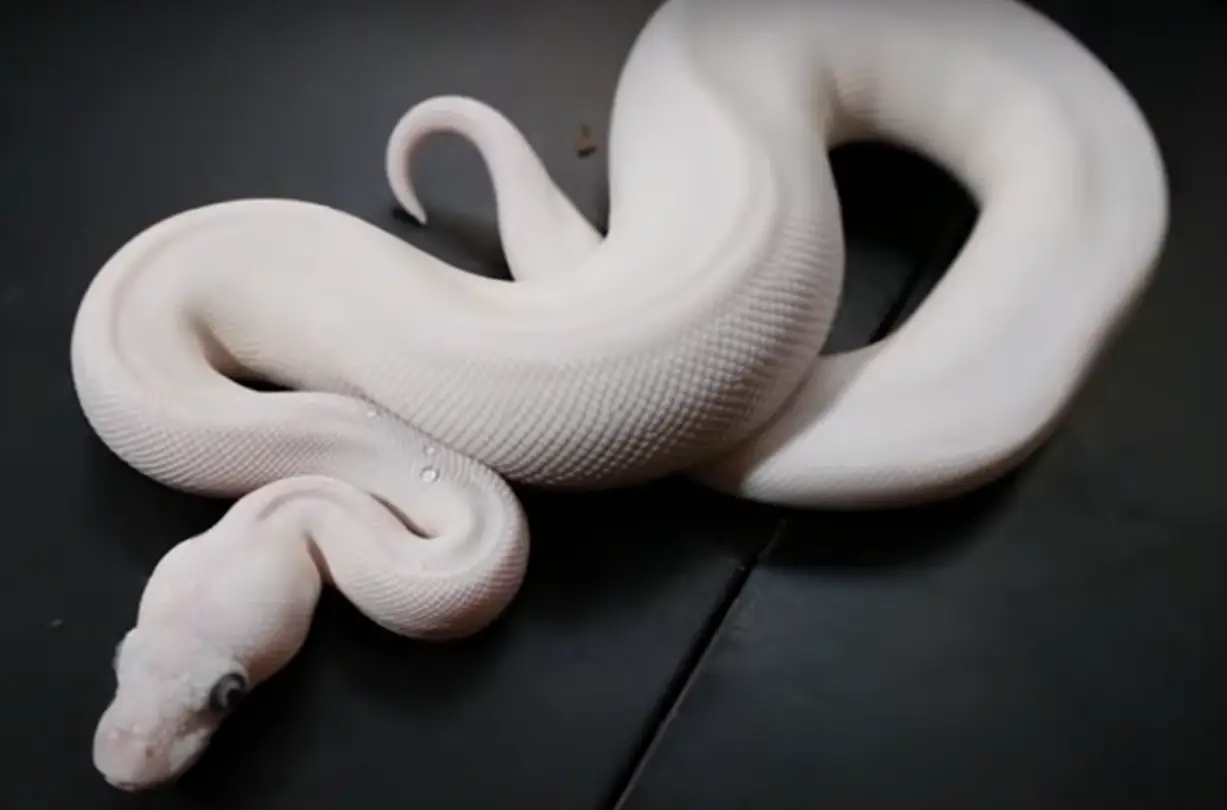
In order to eat, your ball python must feel secure in its environment.
If you have recently changed your ball python’s environment, give them some time to adjust. Make sure their tank is set up the way they like it and that they have all the amenities they need.
2) It’s Too Cold in Their Enclosure
A proper temperature should be always maintained in your ball pythons’ enclosure. Consider using a basking light, heating pads, and a ceramic heat emitter to provide the appropriate level of warmth.
The temperature in the enclosure should be 88-92 degrees Fahrenheit on the warm side. And it can be colder than 75F on the cool side.
Snakes are cold-blooded, which means they rely on the temperature in their environment to be able to function. If the enclosure is too cold for them then it can cause a lot of stress and that will usually lead to not eating.
If your ball python’s enclosure is too cold, you should consider getting a thermometer so you can properly monitor what kind of temperatures they have both day and night. You want to make sure there isn’t any fluctuation between when you’re checking because this may also cause them some distress or anxiety if their environment changes frequently throughout the day/night cycle without warning.
The best way to get accurate readings would be with two separate thermometers placed near each other but at different distances from where your ball python is.
Make sure your ball pythons’ enclosure is not too cold and that it’s at a proper temperature for them to be able to function properly.
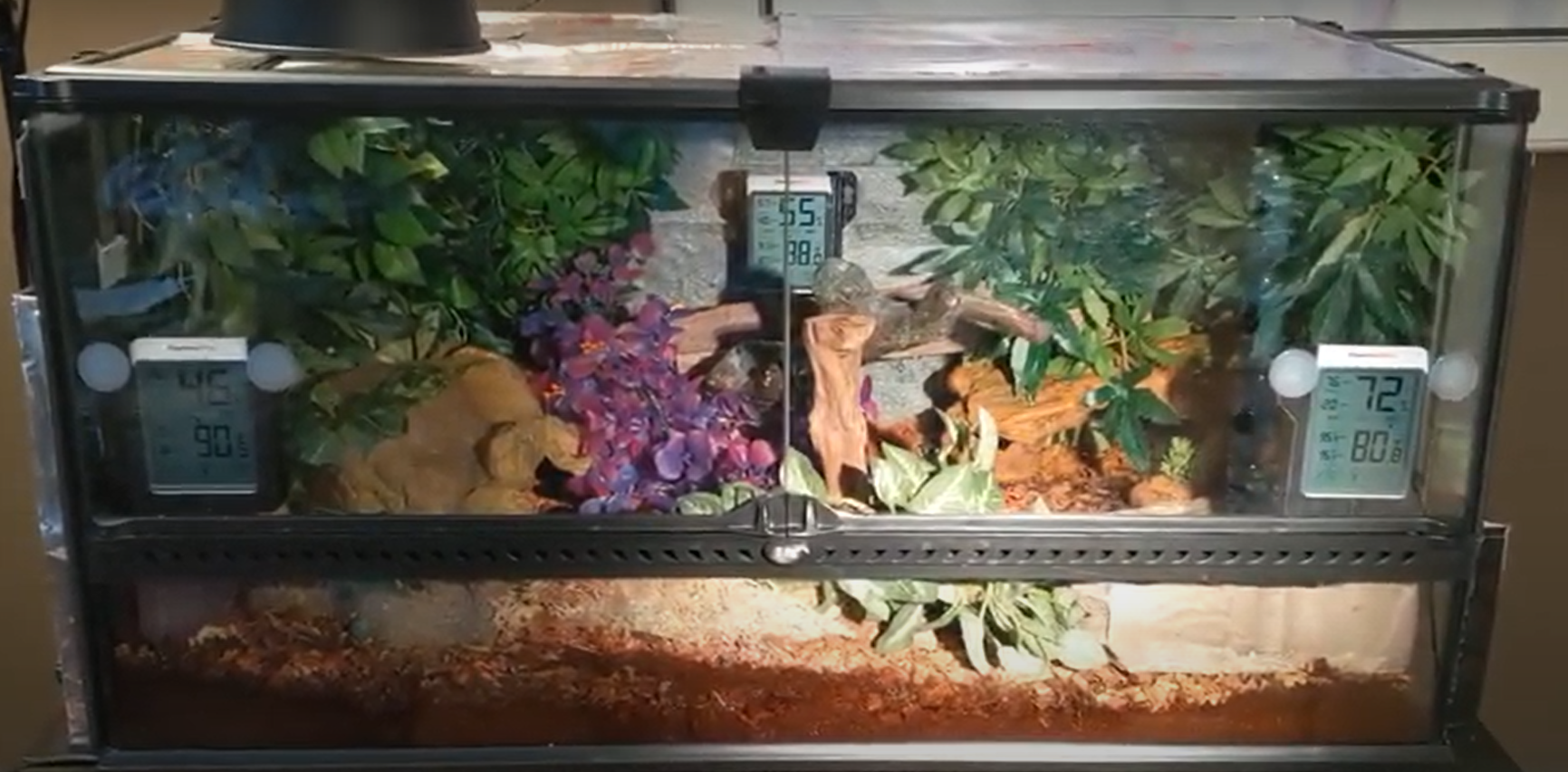
Tips for users:
- Make sure their tank has the appropriate humidity levels as well, which should ideally be around 60%;
- Buy two separate thermometers and place them in different parts of your snake’s tank so you can monitor temperatures accurately throughout the day/night cycle. This will allow you to know if there are any fluctuations with regards to how warm or cool an area becomes without having this information come from just one single thermometer since they usually don’t give accurate readings when placed by themselves within enclosures due to changes in heat distribution over time depending on the size of an enclosure;
- Get a thermometer that is specifically designed for reptiles, as most household thermometers aren’t accurate enough to be used for this purpose;
- If your ball python’s tank is too cold then you will need to find ways of heating it up like using basking lights or heat pads and making sure there are no drafts in their environment which could also cause them distress/anxiety due to changes without warning;
3) Seasonal Changes
When winter arrives, snakes in the wild go into a hibernation-like condition known as brumation. Many ball pythons in captivity will go into brumation as well.
This is usually a sign that they are not doing well and aren’t eating.
Brumation can last for a few days or weeks, but if it goes beyond that then you should take your ball python to the vet.
The most common symptoms of brumation are lack of appetite, decrease in activity, change in skin color, and mucous discharge.
Ball pythons will go into brumation when there is a seasonal change and this is usually a sign that they’re not doing well and aren’t eating. If they’re in this state for more than a week or two then you might want to take them to the vet just to be on the safe side.
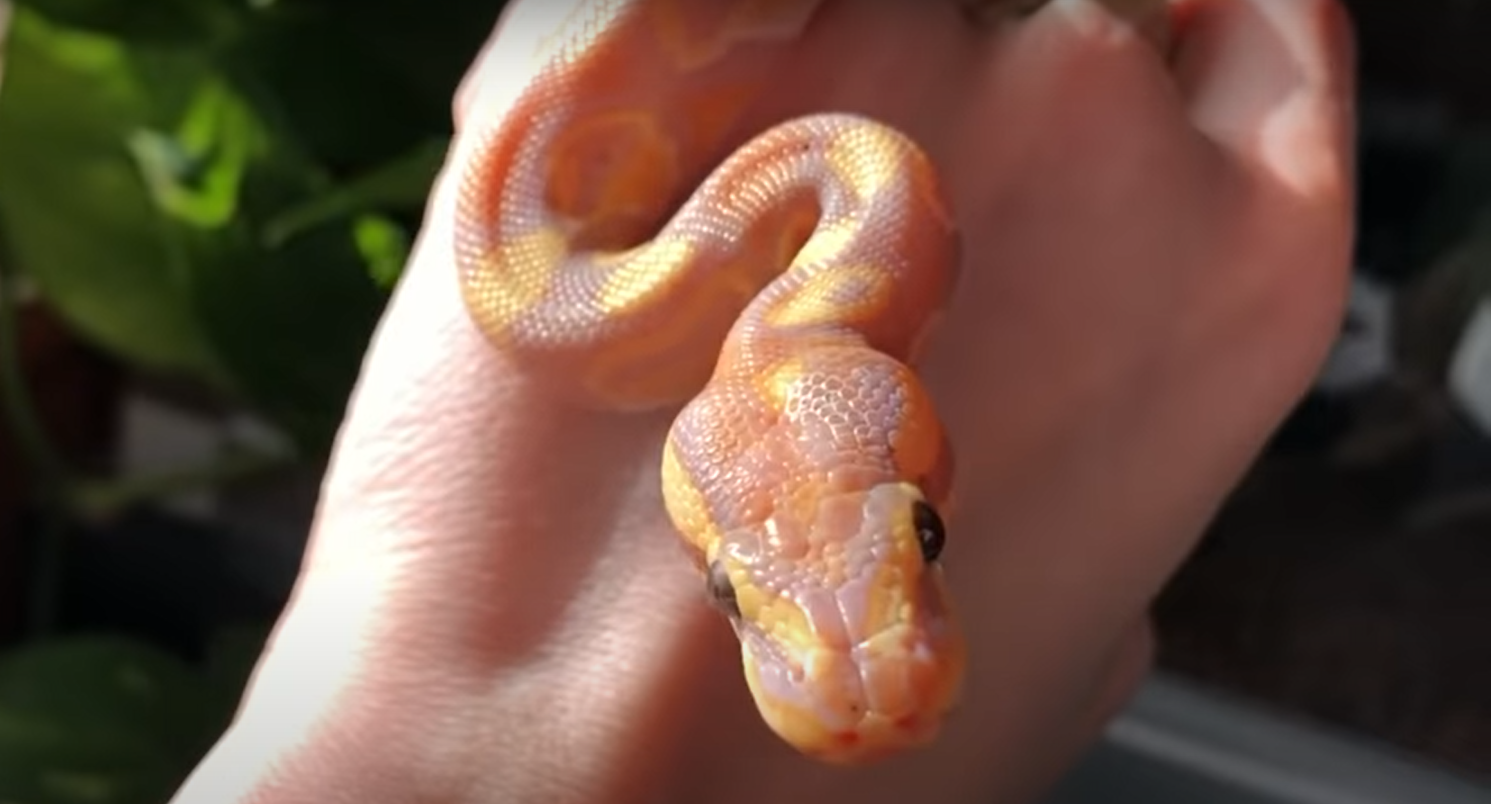
Tips for users:
- Brumation is a natural part of ball pythons’ life and it usually begins when there’s a seasonal change;
- If your python enters into brumation then you should make sure that the temperature in their enclosure doesn’t drop below 70F since this will cause them to go through brumation more quickly than usual, which can be dangerous for snakes when they’re not eating enough food;
- You’ll also want to make sure that there aren’t any drafts near your snake’s tank either because cold air moving over certain parts of their bodies could trigger an instinctual response causing them to go into full hibernation mode even if they don’t need to do so now – which would obviously spell trouble for them;
4) You Need To Adjust Your Feeding Strategy
Ball pythons fasting is typical behavior in the wild. They may go months without eating and do so with little difficulty. In fact, a ball python can go a year without feeding. As always, you should speak to your veterinarian about dietary changes that might be needed.
If they’re not eating then it’s probably because of the type of feeder or if their current feeding schedule is too infrequent for them (e.g., they haven’t eaten in over a month) which may need to be changed so they can better adapt to different types of prey and eat more often than just once every few months depending on how big/small each meal is compared to the size of your ball python.
Ball pythons will fast when there are seasonal changes as well as whenever there aren’t any easy food sources available like live mice around where they reside naturally – and this isn’t anything out of the ordinary since snakes in the wild will often go for weeks or months without eating.
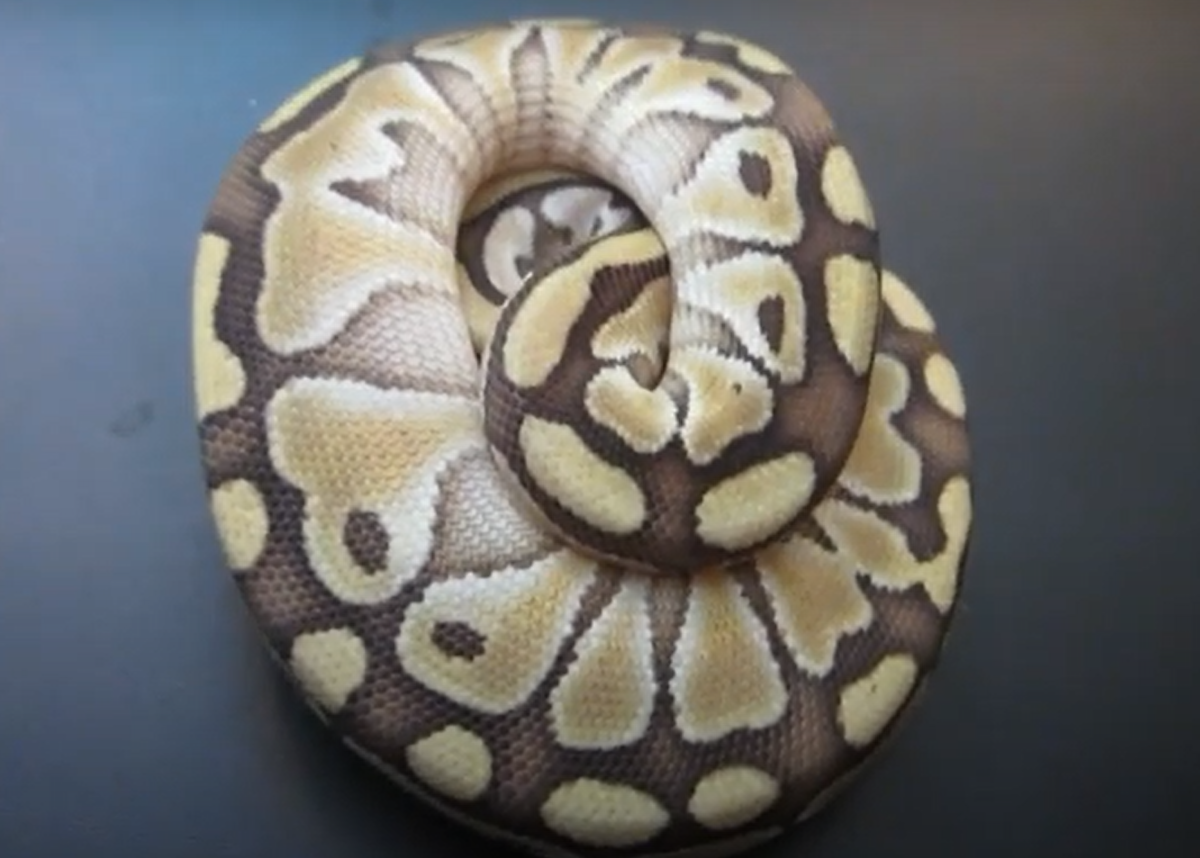
You’ll also want to make sure that you aren’t feeding your snake too much at a time since this could cause them problems as well if they don’t eat all of it within a few days–like how it can be dangerous if their food source is left in the enclosure unattended and starts going bad from not being eaten right away.
The same goes for when you’re trying to feed an adult ball python something like a small rat where they may simply refuse because what you’ve offered doesn’t meet their nutritional needs after fasting for so long, which means that they would need something larger than just one single meal anyways (e.g., two medium rats instead) even if they only eat one rat at a time.
Ball pythons in captivity don’t need to fast as often as their wild counterparts do, but you’ll still want to adjust your feeding strategy, accordingly so that your snake can slowly get back into the habit of eating again without any problems. This means that if they’re not currently on a feeding schedule then you might want to start one where they’re fed something like every week or two weeks until their appetite improves and they’re more active.
5) The Snake Doesn’t Feel Comfortable
Ball pythons rely on their speed and strength to capture their prey in the wild. In the wild, ball pythons lurk in burrows and wait for food to come to them. There is a problem, though:
Rodents, which are a ball python’s primary meal, have a fantastic olfactory sense. As a result of this, when a ball python sheds its skin or feces, it searches for a new den. It isn’t very useful to advertise where they are;
If your ball python won’t eat, consider cleaning their enclosure thoroughly after every skin shed and defecation. The idea is that if your snake can’t smell himself, he’ll eat more readily;
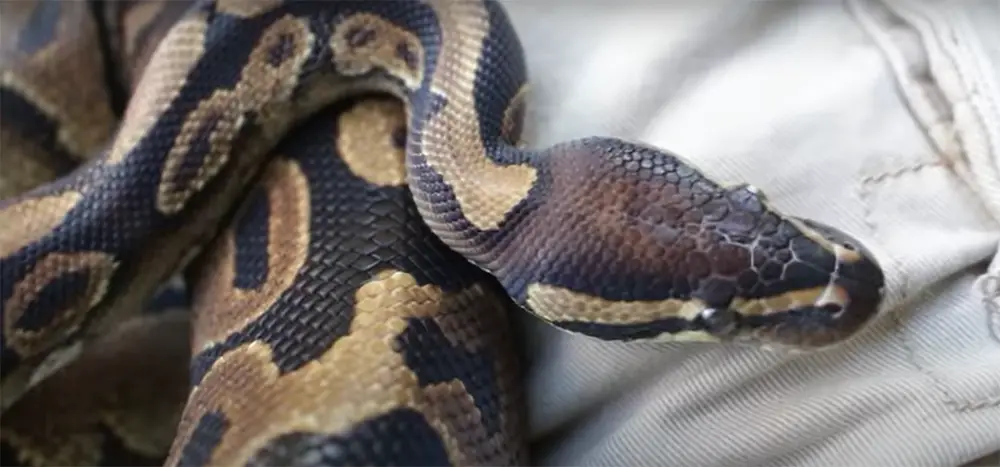
6) The Breeding Time
During the breeding season, your ball python may cease feeding. It’s quite common for a male snake to go three to six months without eating if he can detect an ovulating female.
A female snake may cease feeding just before she lays eggs. If you’re attempting to breed females and this behavior fits the usual egg-laying schedule, it’s a possibility!
7) Not Enough Lighting
Many ball pythons are picky eaters, and they won’t eat if they think it’s too bright outside. For some, the darkness of their cave is sufficient, but others need additional darkness to feel at ease eating.
If your ball python’s home is lit by a bright light because it’s the only heat source, try using an infrared bulb or placing a heating pad on top of the cage instead. You’ll be able to give them the warmth they require (which is critical) while also giving them some darkness.
Tips for users: after turning off the light, it’s also a good idea to feed your ball python 30 to 60 minutes after. Darkness will act as a powerful signal that it’s feeding time, prompting them to eat.
8) It’s Almost Time For Your Pet To Shed
When a python is getting ready to shed, few if any will eat. They’re already anticipating a difficult task ahead of them, and food isn’t high on their list! Finding a safe place to shed is at the top of their priority list.
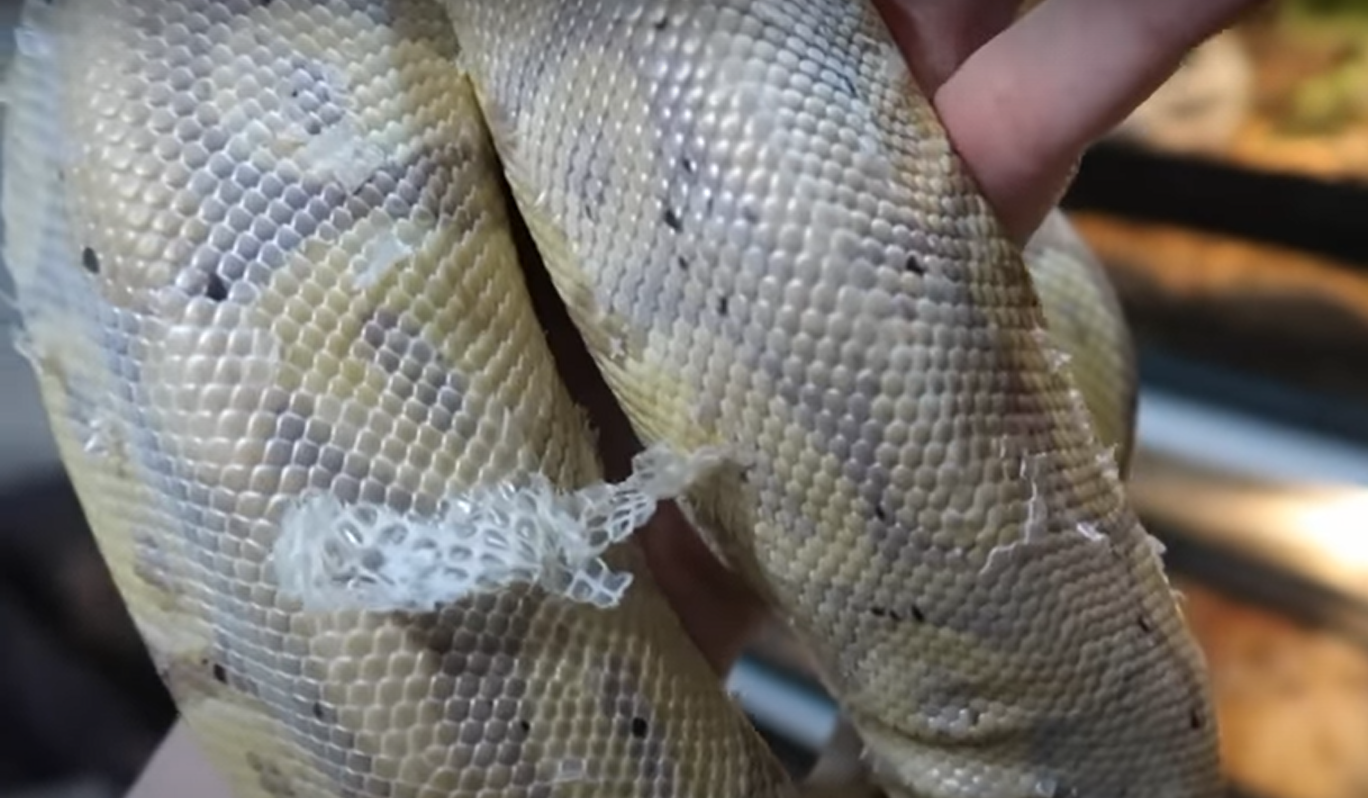
If your ball python’s scales are ashy and uninteresting in color, and its eye caps are gray-blue, it’s time for them to shed. As you gain more expertise, this will become second nature to locate.
Tips for users: after shedding their outer scales, ball pythons are prone to get an itchy sensation. You may use a spray bottle or soak your ball python in water to make the shedding process more pleasant for them. A meal should be served to your snake every day or two after they shed.
9) Sickness
If your ball python isn’t feeling well, they may stop eating. Snakes are susceptible to a variety of ailments, including snake mites, respiratory infections, and mouth rot.
If you notice any additional symptoms of disease in your ball python, you should visit your veterinarian for an extensive examination. In addition to a lack of appetite, snake sickness signs include eye, nasal, and oral discharge, wheezing or clicking noises while breathing, diarrhea, and discolored scales.
If your ball python shows no other symptoms of illness, you may want to postpone treatment until any develop. Ball pythons become stressed out when they travel to the veterinarian, so it’s not a good idea to bring them there.
Of course, if it’s been several months since your ball python ate and you’ve already tried other techniques to fix the problem, you should visit your veterinarian.
They Are Picky About Food and Feeding:
How often is it eating?
If you’re buying an older animal that’s been fed only every three weeks by the current owner, it’ll be no surprise when it doesn’t accept your weekly food gift [2].

Is it eating live, fresh pre-killed, or frozen?
It’s possible that some ball pythons are genuinely afraid of live prey, or that they don’t know how to kill it properly and get hurt in the process.
In reality, some animals will not consume a dead animal without having to go looking for it. Other animals become picky about the scent of frozen prey, but they will eat a fresh-smelling pre-killed rat right away.
How and where are you feeding it?
Another important factor to consider when choosing a ball python habitat is what the snake is accustomed to and prefers.
There are so many options to consider that it might be tough to anticipate without someone who has been caring for your pet telling you exactly what’s possible.
Some snakes demand that you wiggle the meal around while it’s being offered. Others want their pre-killed food left overnight in a dark paper bag.
What prey are you using?
Ball pythons tend to prefer rats over mice. Some ball pythons will hold out even if they’re given an African Soft-Furred Rat, a specialized feeder that is one of the snake’s natural prey items in the wild.
Picky pythons may snub a particular kind and size of the feeder from another rattery or vendor if you provide them with the same item.
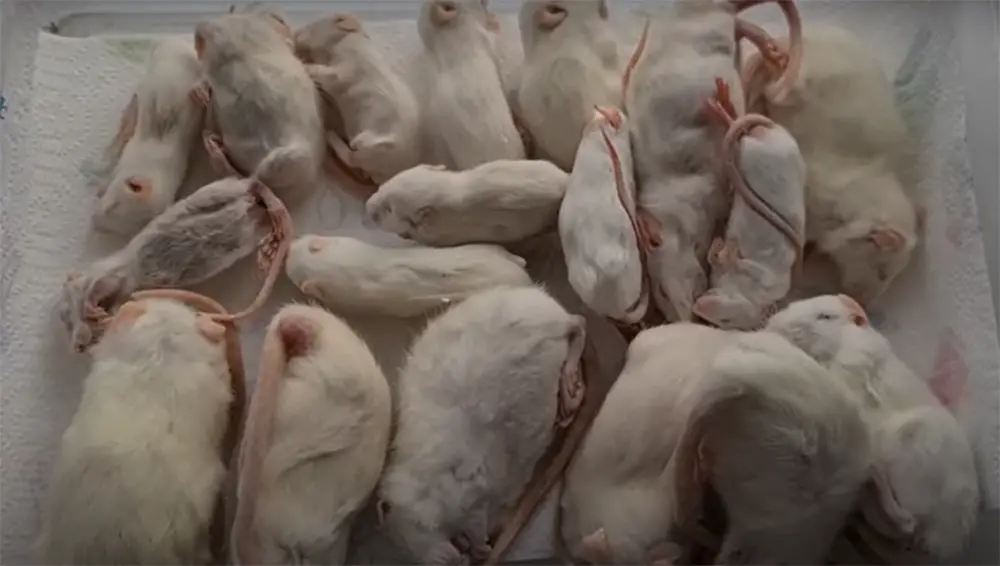
Other Tips Techniques for a Ball Python That Won’t Eat:
Prey temperature
Because ball pythons have heat-sensing pits, thaw that frozen rat and let it soak in hot water. The rodent must be considerably warmer than room temperature for your snake to detect it [3].
Prey type and scent
Different snakes have different likes and dislikes. You may try all of these options, but only one at a time.
If you try more than once without giving your ball python a chance to recuperate from any mealtime stress, it will be significantly less likely to eat.
Begin with one of these alternatives to provide your ball python a different prey and odors to pique their hunger:
- Different sizes of rats, mice, and African soft-furred rats are available;
- Offer the animals and sizes separately frozen or pre-killed;
Thawing frozen mice with a chicken bouillon cube, or dunk it in chicken noodle soup. If you’re not squeamish, you can also try “braining” the rodent – opening the skull and revealing the smell of the brain, which may be appealing to some snake species;
Only use live prey as a last resort, and be careful to watch over your snake so that he doesn’t harm it, but this may finally pique your ball python’s hunting and eating desires;
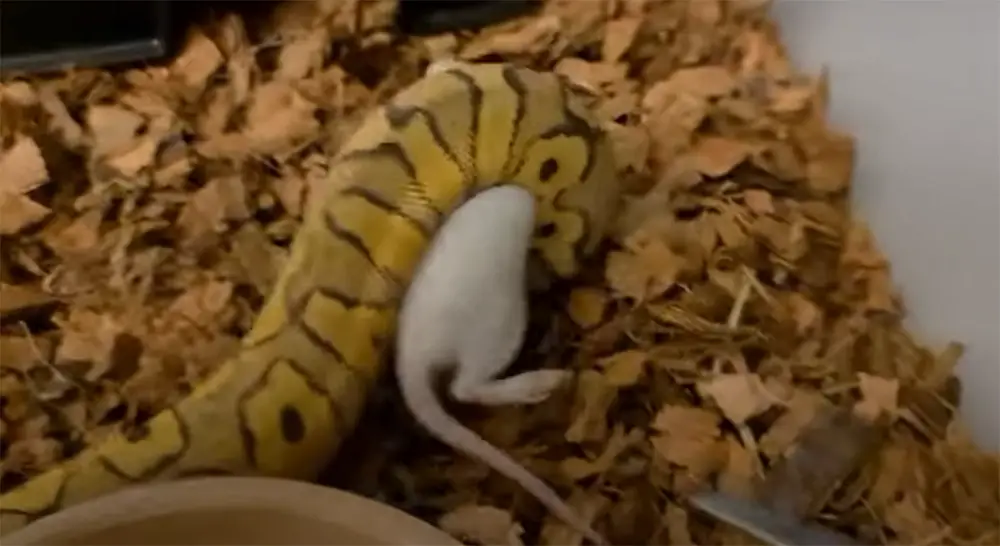
Feeding technique
Only try one new approach at a time. If your ball python won’t eat, wait seven to fourteen days before attempting something new. Try one of the following methods as a change of pace:
- Wiggle the prey in front of them until they become interested;
- It’s easier to give your guinea pigs their snacks during the middle of the night or in the dark;
- Don’t feed them unless they’re in their enclosure or hiding place;
- Leave them in a paper bag overnight in their enclosure, with the pre-killed prey item;
How to Get a Ball Python to Eat:
Visit Your Veterinarian
Snakes that are undernourished will frequently refuse their meals. As a result, it is critical to schedule an appointment with your veterinarian if your snake refuses food for longer than a few weeks.
Your vet can tell if your snake has parasites, respiratory infections, or any other health issues that are affecting his appetite. If necessary, your veterinarian may tube-feed your pet to prevent him from becoming malnourished while you try to cure any problems that he is experiencing [4].
Check the Husbandry Procedures and Habitat Setup
The most frequent reasons why ball pythons refuse to eat are husbandry issues. You’ll want to make sure you’ve got a proper thermal gradient set up, which allows him access to a variety of temperatures. You’ll also want to be sure that his basking area is sufficiently heated to keep his metabolism going strong.
A hiding place is essential for your ball python, especially if you have more than one. Your snake may become anxious if it is deprived of such a place, which will usually cause them to refuse its food.
Offer Your Ball Python a Different Prey Type
Some ball pythons have very particular dietary requirements. Fortunately, by varying the prey you offer, you may frequently persuade them to eat.
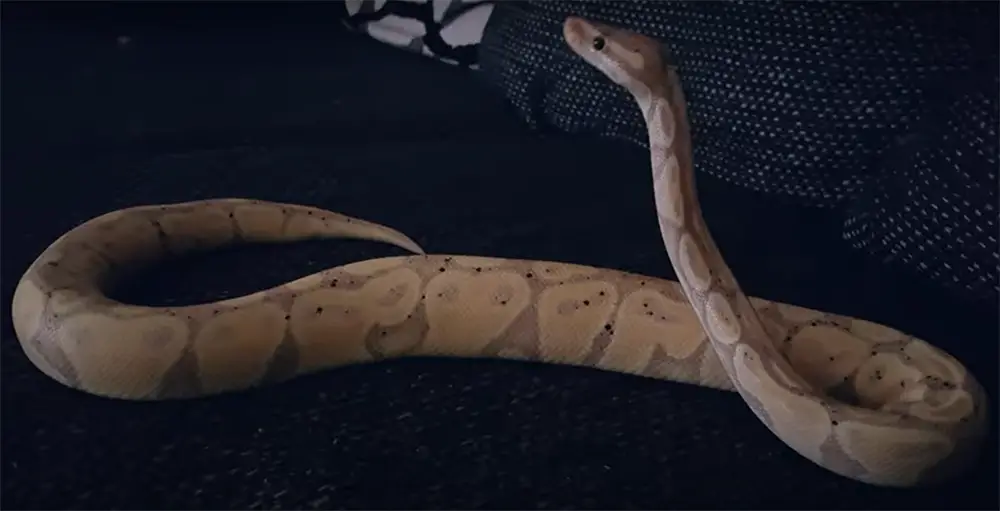
For example, you might start by giving your snake a different-colored domestic mouse or rat. White wild rodents are uncommon, so seek dark or colorful rodents. Some commercial rodent breeders offer rats in a variety of hues. If that doesn’t work, try offering your snake gerbils, hamsters, or multimammate mice instead.
If none of these suggestions work, you might offer your snake a frozen-thawed bird, such as a baby or duckling. Some keepers have also claimed to have success using domestic pets, such as finches.
Use Scent Transfer Techniques
Snakes are attracted to the aroma of food, which means that enticing them with a non-typical prey species by making it smell like something more appealing is frequently successful. Simply washing off a domestic mouse or rat and then stroking it on the animal you want to scent like is often enough.
Find a scent that works for you by experimenting with the odors of other rodents, birds, and even lizards. Gerbils are one of the most promising species to test, but hamsters and finches may also be effective.
Presentation Problems
It’s possible that you’ll have to change your presentation in order to entice some ball pythons to eat. If you move the feeder rodent too quickly, it may cause shy ball pythons to become frightened. Some ball pythons, on the other hand, appear to respond best when they are gently “touched” with the rodent by lightly tapping its face or neck.
In other situations, it’s necessary to animate the rodent in a realistic manner. Make it wiggle about a bit, move from one area of the cage to another, and act as a live mouse (just do so with long tongs or tweezers – you don’t want your snake to mistake your hand for prey).
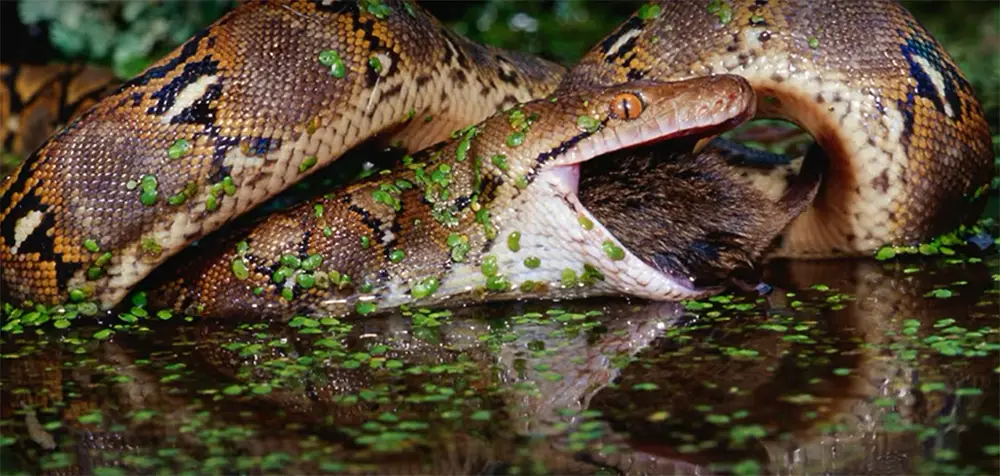
Methods And Tricks On Making Your Picky Ball Python Eat [5]:
- Place a rat in a bag or wrap it in a towel and heat it to 100-110F under a light. You may also use a plate above simmering water to reheat;
- Make sure everything is set up correctly – check temperatures, hides, humidity, etc. The most common reason why ball pythons will not eat is due to husbandry errors. It must also appear secure in the cage – make sure it’s messy enough. Keep your distance;
- If your ball python isn’t eating, try feeding it a pre-killed rodent. That would indicate that a rodent was recently killed and is still warm and fresh-smelling. Pre-killed mice/rats may be purchased at your reptile shop or from a breeder;
- Make use of a variety of presentation methods. One approach to offer a mouse is to scent a “trail” in the cage and leave it so that your ball python may feed on it. You can also try wiggling it on tongs/hemostats (the greatest technique). Also, you may try putting a rodent in concealment or even on a limb/foliage (so that your ball python may “hunt” for it);
- If your ball python isn’t eating, you can try to move it into a temporary smaller enclosure with some bedding, a hide, and a water bowl. Leave a rat in the cage (pre-killed or frozen/thawed) overnight. Ball pythons are frightened of rodents, so leaving them alone with one in a reduced space might encourage them to eat;
- Feeding a variety of rodents is recommended (even gerbils and chicks, but be cautious since they can become addictive). You may also try various color rats/mice. This is far from ideal, yet if your ball python isn’t eating its usual food source, you can give it a shot;
- Switching is a good idea if you’ve been trying to get your ball python to eat and feed it something that you don’t want to give any longer. “Scenting” (rubbing) a new prey item with the rodent’s bedding will encourage your ball python to eat;
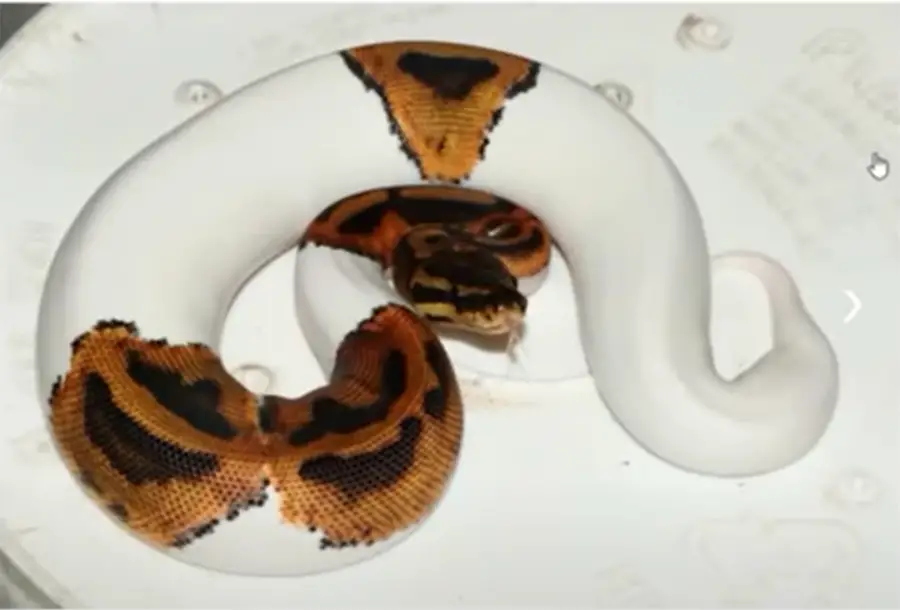
When your ball python has lost a lot of weight and is significantly underweight, force-feeding or tube feeding (liquefied diet) is acceptable. Please keep in mind that forcing your ball python is serious business; you must only go ahead with it if it’s been some time since the last feeding.
It’s very stressful for your ball python and may make it refuse food for even longer, especially if you do it when there isn’t a need. If your snake’s weight drops by 10-15%, you should seek veterinary care. Please contact a professional for help and advice.
In addition, you might be interested in how long can a ball python go without eating guide.
FAQ
1. What do I do if my ball python won’t eat?
If your ball refuses to eat, open the pre-killed food and expose the blood to entice it with the scent. Using long tongs, hemostats, or feeding forceps to dangle and wiggle the food in front of your snake may be useful, especially if your ball prefers eating live prey [6].
2. When should I worry about my ball python not eating?
If your ball python isn’t eating, you should always take it to a vet/reptile expert. If there are problems with the enclosure or habitat setup (e.g., incorrect temperature), these can be easily fixed and might encourage your snake to eat again. However, if all is perfect in terms of husbandry but the snake still refuses food for over two weeks, you should look at other possible reasons why this happens.
You must also get professional help if after trying out different methods of enticing your ball python to feed without success, or its weight has dropped below that optimal level because it hasn’t eaten for too long already. Even then, keep offering prey items until you have received advice from an expert.
3. How do I know if my ball python is dying?
A lack of activity, pink or red skin, and the inability to flick the tongue are all signs that a ball python is dying. The following are the most important indicators to watch for in your ball python to determine if it is seriously ill or about to die:
- Lack of activity;
- Lack of appetite;
- Noticeable weight loss;
- Dehydration;
- It doesn’t flick your tongue;
- The skin is reddish or pink;
- There are bubbles around the nostrils;
- Pupils are of different sizes;
- Limp and cold body;
- Swollen mouth;
- It breathes with the open mouth;
- Weird color of the poop;
- It rolls over its back;
As shown above, the symptoms of dying can overlap with those of illness at times. The age of the ball python is the most significant consideration here.
Ball pythons can live for more than 30 years in captivity if they are well cared for.
The oldest living snake on the planet is a ball python who is thought to be approximately 62 years old.
If your ball python is displaying any of the symptoms mentioned above, there’s a good chance it’s just sick. In many situations, these illnesses may be treated if your ball python is young. If you have a young ball Python and it displays any of the symptoms listed above, visit a veterinarian as soon as possible.
However, if your ball python is 25 years old or older, there’s a good chance that these symptoms are a sign of its impending death. By that point, little you can do if it becomes sick due to age. You may still take it to the veterinarian for an examination, but they are more likely to suggest additional care for the ball python as it approaches the end of its life [7].
4. How long can I leave a mouse in my snake’s cage?
If a snake isn’t immediately interested in food, it’s unlikely to eat right then. The longer the prey item is kept with the snake, the more desensitized it becomes.
The rule of thumb is to avoid leaving live animals with an unsupervised snake for more than 15 minutes at a time [8].
5. Why won’t my snake eat his mouse?
If the cage is too hot or cold, your python may refuse to eat his mouse. If the humidity level is insufficient, the snake may not want to feed. In the evening, give the enclosure a gentle spray of room temperature water, which might entice him to seek food. If the snake is unhappy in his surroundings, he may refuse meals [9].
6. Will a ball python eat a dead mouse?
A snake’s diet should be composed of whole prey, such as mice and rats. Snakes should be taught to consume dead creatures. It is more humane for the creature and safer for the snake. Freshly killed prey may be offered to snakes, either thawed or freshly frozen [10].
7. Can you refreeze your snake food?
Yes, you can refreeze mice for snakes. However, it is dependent on certain conditions [11].
8. How often do ball pythons eat?
Feeding juvenile ball pythons once a week and adult ball pythons every 1-2 weeks is recommended [12].
9. When should I force-feed my ball python?
If your snake hasn’t eaten in a while and is dropping weight, you may force-feed it by putting solid food like a pinkie down its throat or experimenting with tube feeding. While a veterinarian usually does not advocate force-feeding as the first option, it is something to try to get nutrients into your snake’s system [13].
10. Can a snake starve itself to death?
A ball python will die of starvation if the surroundings in which it lives are poor, and its owner does not take steps to provide a suitable environment and adequate food. However, starvation deaths (for reasons other than negligence or carelessness) among ball pythons are quite uncommon.
A ball python can go 6 months without food, in general. They do this to survive. Snakes in the wild are used to going without food for longer periods of time. As a result, they lower their metabolic rate and save energy by doing so.
If your snake goes for an extended period of time without eating, even if you take excellent care of it, you should not be alarmed. Now that I’ve addressed your question, let’s discuss the snake diet in greater detail. Continue reading to learn about the many types of feed available, how often they eat, and how to feed them [14].
11. Can snakes smell frozen mice?
Yes, snakes can smell frozen mice. In fact, they prefer to eat them that way because it is a more natural diet for them.
12. How do I know if my ball python is hungry?
When a snake is hungry, it will behave in a certain way, such as prowling the tank’s front, being more active, focusing on you whenever you are near the enclosure, flicking its tongue more frequently, and hunting at approximately the same time every day or night [15].
13. How often do ball pythons drink water?
The ball python does not drink much water since it creates solid urine called uric acid to save moisture. This is a normal response to living in a dry, desert environment. To prevent health issues, though, provide clean water every day or at least once each week if the snakes are allowed to drink or soak [16].
Useful Video: Why Your Ball Python Won’t Eat – Feeding Picky Snakes
References:
- https://www.reptiledirect.com/ball-python-wont-eat/
- https://reptile.guide/ball-python-wont-eat/
- https://reptile.guide/ball-python-wont-eat/
- https://www.terrariumquest.com/ball-python/not-eating/
- https://www.lizards101.com/ball-python-not-eating-reasons-solutions-to-make-it-eat/
- https://www.thesprucepets.com/feeding-ball-pythons-1239265
- https://mercurypets.com/12-signs-a-ball-python-is-dying/
- https://www.lllreptile.com/articles/97-feeding-prekilled-prey-to-reptiles/
- https://animals.mom.com/wont-snake-eat-his-mouse-10856.html
- https://vcahospitals.com/know-your-pet/snakes-feeding
- https://xomypets.com/can-you-refreeze-mice-for-snakes-if-so-what-do-you-need-to-do/
- https://www.petco.com/content/petco/PetcoStore/en_US/pet-services/resource-center/caresheets/ball-python.html
- https://oddlycutepets.com/force-feed-ball-pythons/
- https://petigloo.com/can-a-ball-python-starve-itself-to-death/
- https://reptilecraze.com/how-to-tell-that-your-snake-is-hungry/
- https://puppiesareprozac.com/pet-care-articles/ball-python-pet-care

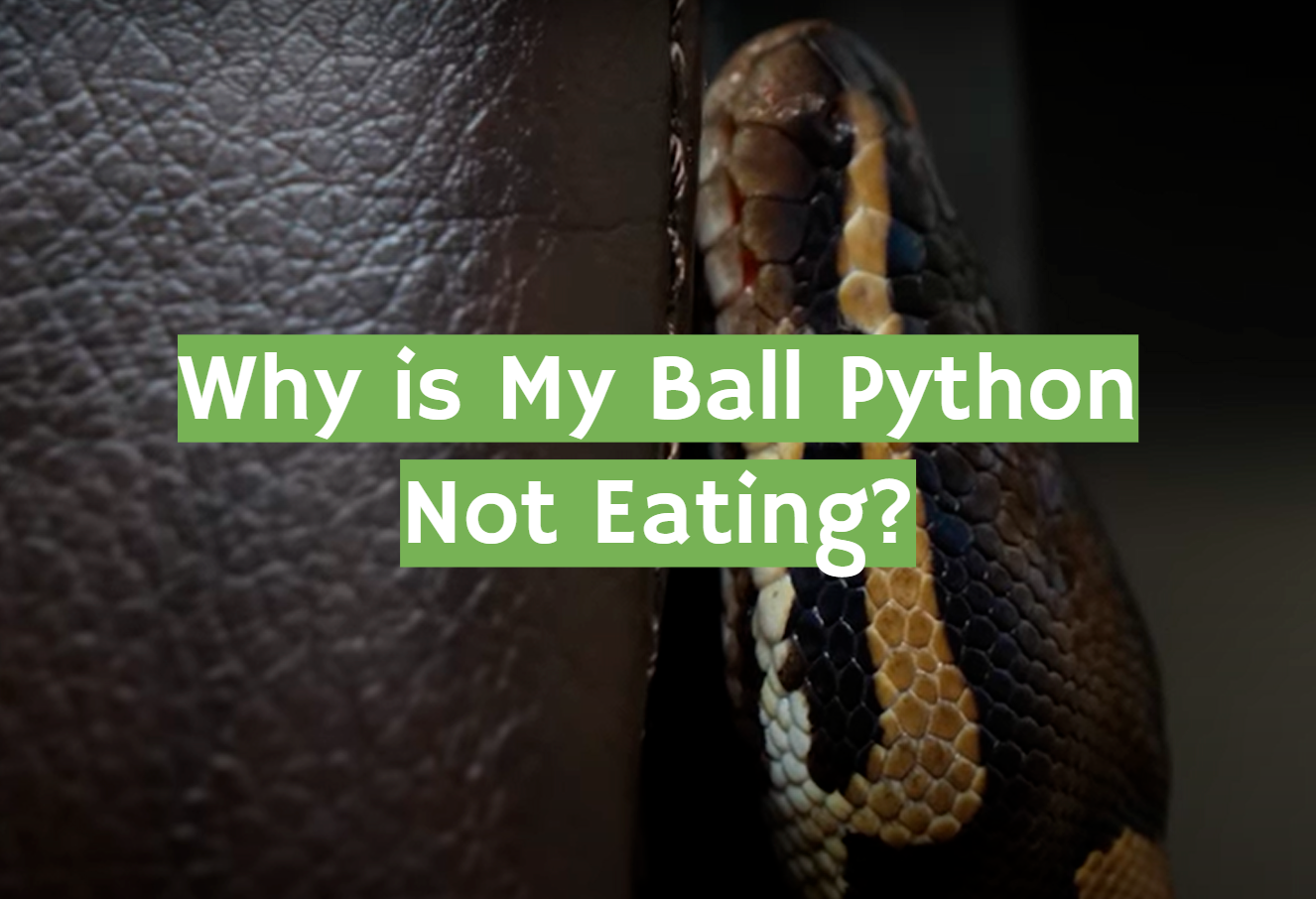
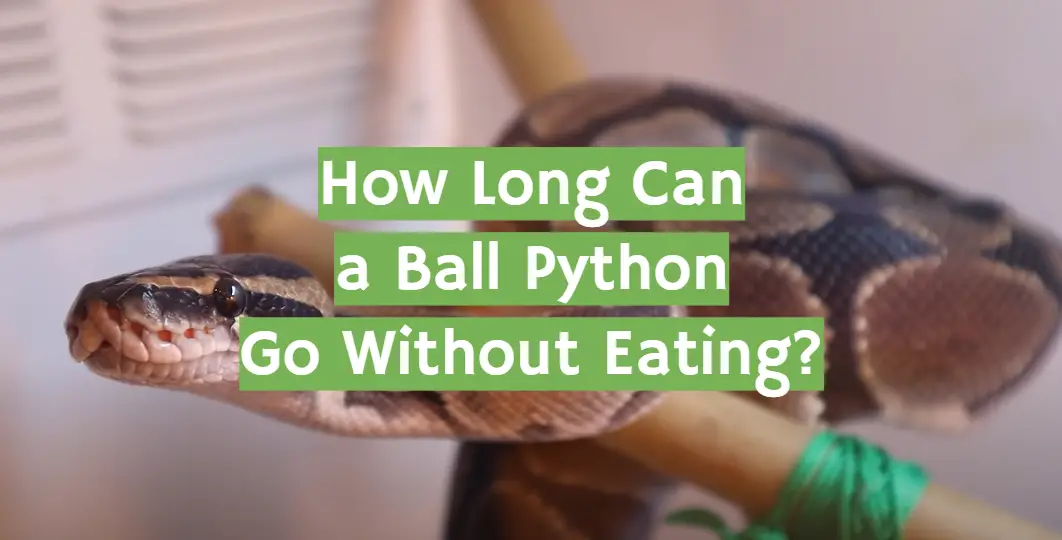



Leave a Review